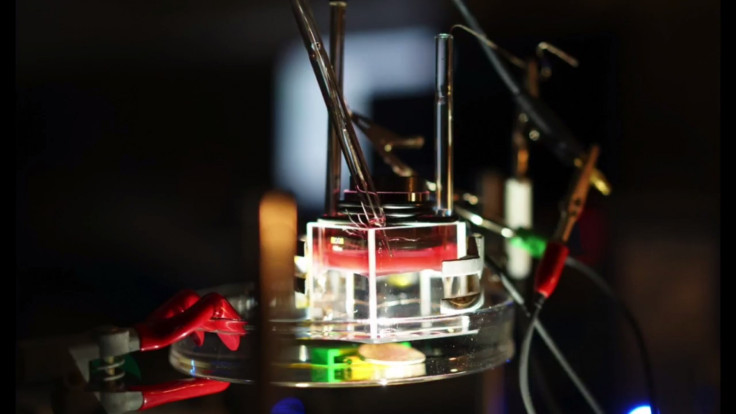Wonder material that switches from being a mirror to a window devised by scientists
Technique uses nanotechnology to manipulate particles on a tiny scale.

Researchers from Imperial College London (ICL) have developed a new technique which causes a special material to change from being reflective, like a mirror, to becoming see-through, like a window. The filter works by fine-tuning the distance between nanoparticles – molecules between 1 and 100 nanometres in size – in a single layer of the material.
The development could enable scientists to develop technology whose optical properties can be manipulated in real-time.
Creating a material which can be 'tuned' in an accurate manner is very challenging because of the extremely small scales involved. For the optical properties of a single layer of nanoparticles to be altered, the space between the particles needs to be set uniformly and with great precision.
To create the filter layer, the researchers placed gold nanoparticles in a special liquid solution and applied a small voltage to them. By doing this they were able to manipulate the spacing of the gold nanoparticles, forcing them either closer together or further apart depending on the voltage.
This results in the material changing from being reflective when the particles are close together – because wavelengths of light cannot pass through – and transparent when they are spread apart.
"It's a really fine balance - for a long time we could only get the nanoparticles to clump together when they assembled, rather than being accurately spaced out", said Joshua Edel a co-author of the study from the Department of Chemistry at Imperial. "But many models and experiments have brought us to the point where we can create a truly tuneable layer."
The research detailing the work has been published in the journal Nature Materials.
In contrast to previous attempts to manipulate the optical properties of a material - which used chemical techniques - the team's new method is fully reversible.
"Finding the correct conditions to achieve reversibility required fine theory; otherwise it would have been like searching for a needle in a haystack", said co-author Alexei Kornyshev. "It was remarkable how closely the theory matched experimental results."
© Copyright IBTimes 2025. All rights reserved.





















